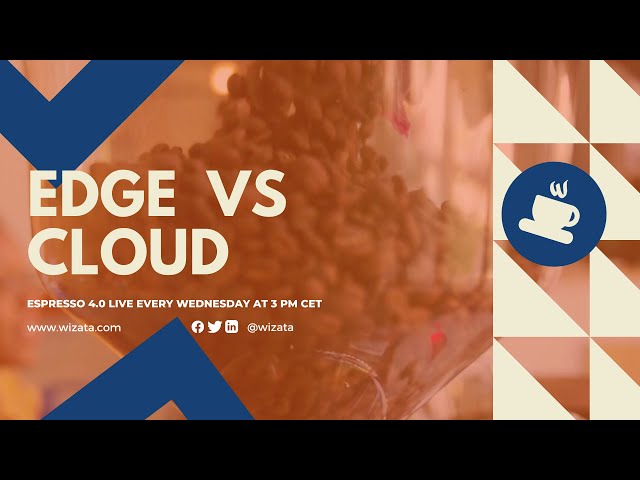![]() Espresso 4.0 by
Espresso 4.0 by
Wizata
Industry 4.0. One of the biggest pillars is cloud and cloud computing. What does that mean for Edge? More specifically, is there a scenario where we utilize both Edge and the cloud? Or will
the cloud replace Edge? And more interestingly than forecasting, what are the benefits of each option for your regular manufacturer?
Cloud Advantages
We work with industrial data, so there’s always a huge amount of data to treat. When you need to build models, intelligence, or explore data, it's always recommended to work in the cloud because there, we have a full capacity of resources scaling and a lot of calculation power.
The cloud is fast in how you create your analytics and develop your applications. However, the cloud itself needs Internet connectivity. So to apply what you develop to your actual data, you need a continuous internet connection. For most factories, stream websites, or productions, it's only sometimes the case to be sure to have the bandwidth to treat all the data needed for stream applications.
Another factor is what you want to do with the application that you build. If you build solutions for informing people, tracking specific signals, or just tracking metrics and not acting directly in the process, cloud execution, if the bandwidth and the connection allow, is sufficient. You just visualize the response and have access to the results and everyone in your company.
Edge Advantages
But, if you want to interact with the process, make certain decisions, or automate directly, a better solution is to produce the application that you would initially build on the cloud on a device called Edge that is hosted locally on-premise in plants.
This guarantees that the calculation block is always available even if you lose an internet connection. You have data from the machines, and your application is working, so it's ingesting this data, executing the model and all the calculations that would be useful, and returning the results to the local environment.
People can also access and view these results and send input back to the machines without any issues with Social Security because they are inside the site.
What Will the Future Bring?
Let's talk about five, ten, fifteen years from now. Let's assume a scenario where connectivity is not a problem, and the internet is not a problem. We have Starlink and everything. Are we still looking at an optimal kind of solution, Edge vs. Cloud, or will we move more toward the cloud in that case?
Automation will evolve to centralize in the cloud, primarily because there are a lot of changes, management, and a large number of people involved in such projects and infrastructure. In the meantime, we have a transition phase where both Cloud and Edge will be needed. Even when the transition is complete, you will need to have a local application.
Imagine a car that is driven automatically by the information acquired from a camera. Traffic is still the same. You must respond quickly to the things and information observed in the environment. We can’t imagine or assume what the internet's speed will be like in the future. Still, in cases where you need to have direct information from the machine as fast as possible, without delays, a local application might still be the better choice.
Last but not least, many manufacturing industry people with no cloud policy say their biggest concern is cybersecurity. What can you tell us from your experience working with clients that use the cloud to make us feel safer?
The cloud is a bit of something that is not well known, some magical box everyone can access, which is not exactly the case. Everything is secured from the moment you start to collect data. The data stored in the could is restricted and accessible to a specific set of users through permissions and notification methods, like double authentication. Everyone has access and functions on a different subsystem, so it is complicated to get inside.



